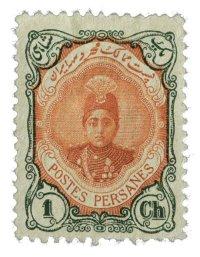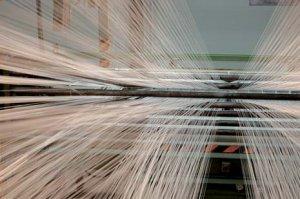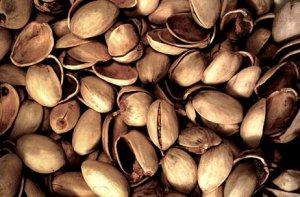Eye on Trade: More Than Just Pistachios
By Sarah Noorbakhsh
Although under increasing pressure from the US to sanction Iran, Japan has upheld steady ties with the controversial nation.

Japan and Iran have maintained a trade relationship even during the Iranian Revolution and Iran-Iraq war, two volatile periods in the nation’s history. The exportation of crude oil to Japan began in 1953 when the country sought customers for its newly deregulated oil industry and found Japan to be its first willing partner—it turned out to be a good customer, purchasing an average of 500 barrels of black gold per day.
It could be said that the relationship is based almost purely on Iran’s supply of fuel to Japan; bilateral trade between the countries is notoriously unbalanced, with Japan exporting a measly $1.4 billion to Iran last year, compared to the Republic’s $11.3 billion. And of that, nearly $11 million is oil.
Things have begun to change, however, with Japan’s hot neighbor China rising up into the world of industrialization. China surpassed Japan as Iran’s top trade partner in 2006 and exports of oil alone numbered nearly $15 billion last year, with experts stipulating that the number may nearly double by 2010. As Saeed Lashkari, Counsellor of Economic Affairs at the Embassy of the Islamic Republic of Iran explained at an informal meeting, “China’s emerging economy is starved for energy. Japan required a great deal of oil during reconstruction in the 50s and 60s, but as growth has slowed, China has begun to pick up the slack.”
And while the country feels pressure from neighboring Saudi Arabia and Arab Emirates, Lashkari says that at 500 barrels per day, Iran controls a stable part of the market.
 Persian carpets make up part of Iran’s traditional goods trade, the country’s third most lucrative market.
Persian carpets make up part of Iran’s traditional goods trade, the country’s third most lucrative market.
With the focus on oil turning towards China, Iran is currently seeking ways to increase their non-oil exports. Although the country has a rapidly expanding capital goods industry—the automotive industry alone saw an 80 percent increase in car manufactures between 2005 and 2006—efforts to export products to Japan have been understandably difficult, and the government has begun to put emphasis on petrochemical products as a profitable area. In 1997, The National Petrochemical Company (NPC) commenced a 15-year plan to expand Iran’s petrochemical industry. This $21 billion strategy is set to increase the manufacturing of products such as methanol and polyethylene within numerous government-established Petrochemical Special Economic Zones. The Iranian government has already begun to see the fruits of this strategy, with worldwide petrochemical exports reaching $6 billion last year, up from $2.3 billion in 2005.
A third lucrative market can be found in traditional goods. With an ancient culture and abundance of resources, Iran has much to offer. Indeed, the already widely known Persian carpets are just one on a varied list of exports that include stone tiles, pomegranates and pistachios. But the industry is still young, and while Japanese consumers may acknowledge the quality and rarity of these Iranian exports, there is still a way to go before demand increases and the market becomes more profitable. Iran claims it is devoting a great deal of energy into understanding consumer needs in Japan’s rich, yet extremely demanding, marketplace.
Saffron, one of Iran’s major food exports, is one area in which the Trade Promotion Organization of Iran (ITPO) is focusing its efforts. In this health and beauty-obsessed island nation, herbal items that promise beneficial effects are undoubtedly big sellers, but grabbing a piece of the already saturated market is still a challenge. To cope, the ITPO has teamed up with several other organizations to sponsor a joint study between Iran’s Mashad University and Chiba University to not only explore the effects of saffron and other herbs, but to expand the industry through cooperation with JETRO. In October, ITPO held the ‘Iran- Japan Joint Seminar on Persian Herbs and Saffron,’ and while the results have yet to be seen, Iranian representatives are hopeful about the future of the industry.
Another hurdle for Iran is its relationship with the United States. As the US puts increased pressure on the Islamic nation regarding both human rights and nuclear issues, it also manages to have considerable leeway with Iran’s trade partners as well. Pistachios, one of the country’s major non-oil exports, came under fire in 2002 when inspections found excessive levels of a carcinogenic known as aflatoxin in a large volume of exported Iranian pistachios. The European Union immediately ceased imports, a ban that only lasted three months but did significant damage to the reputation of the Iranian product.
 Pistachio nuts have been at the center of controversy surrounding its exports.
Pistachio nuts have been at the center of controversy surrounding its exports.
The US put similar demands on Japan, pressuring the government to stop imports from Iran while increasing the amount of Californian pistachios brought into the country. Things have gradually improved since then and with the support of Japanese officials, Iran is working on ridding their pistachios of aflatoxins.
Iran claims they are also interested in working with Japan to develop their natural gas industry—of which the country has the second biggest resources in the world— but US sanctions prevent a partnership between the two countries. Sources close to the embassy commented that “economic globalization is like a web, and trade cannot be stopped by just one country.”
Progress is occurring within the country as well, and the deregulation of a large number of industries is a positive sign that bilateral relations will improve between the two countries. Between 2006 and 2007 alone, there was an 18 percent increase in bilateral trade, a trend that analysts say shows no sign of stopping. But with precarious political relations between Iran and Japan’s allies, as well as the yet unforeseen consequences of the US presidential election, the next chapter in these trade relations is unpredictable at best.





